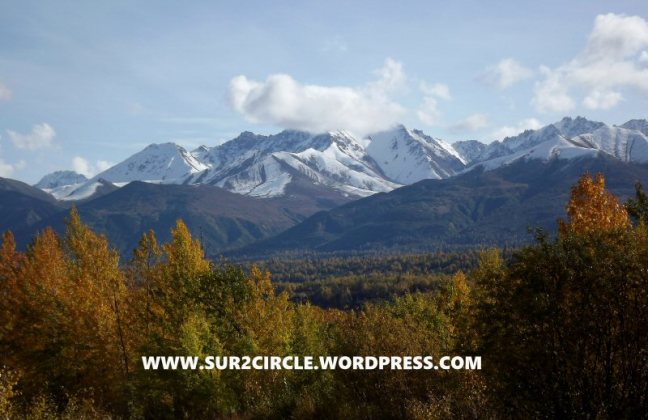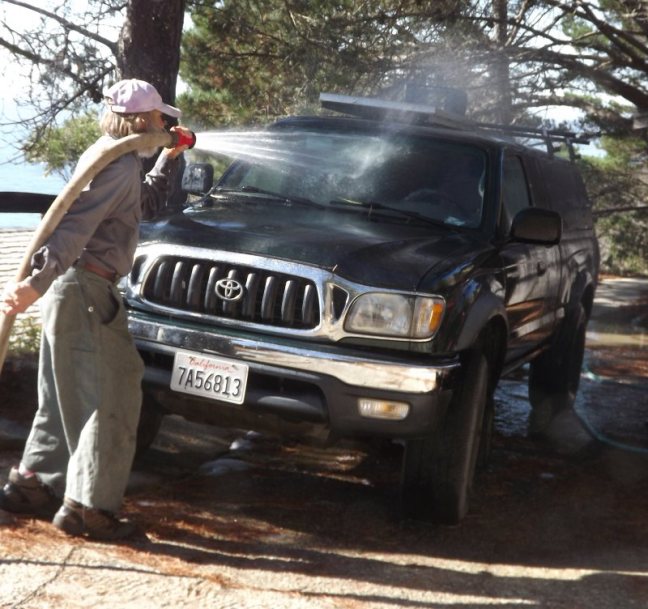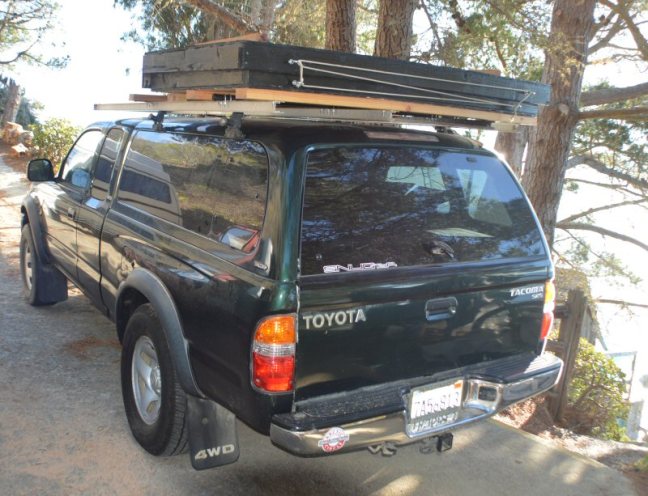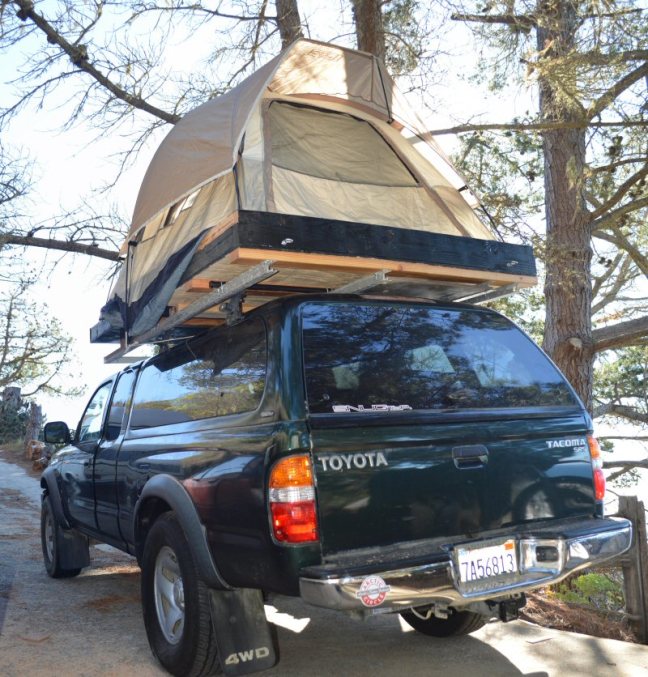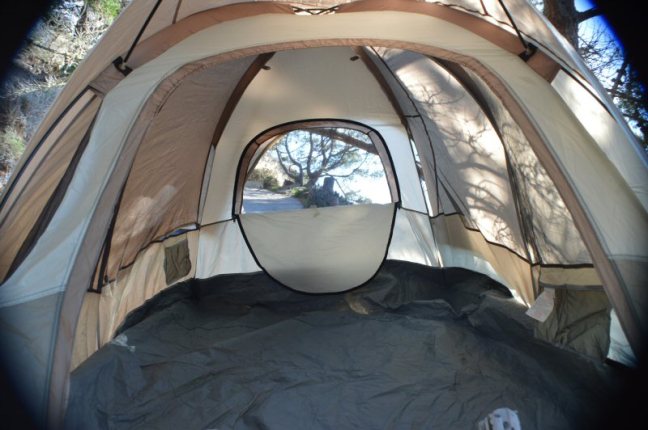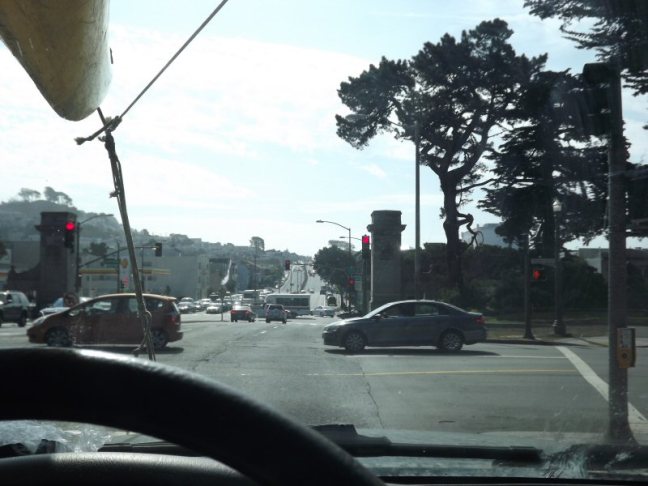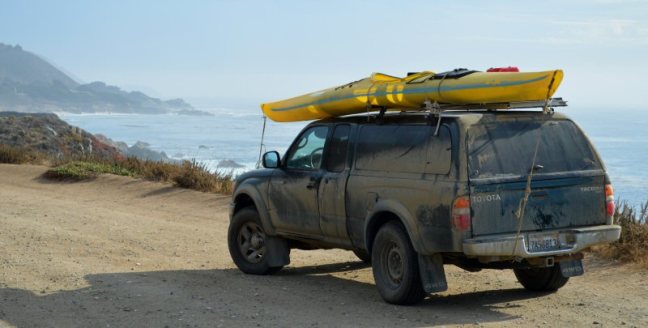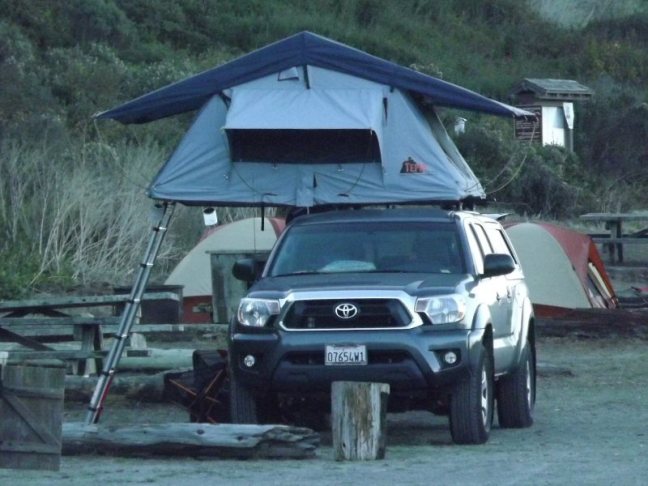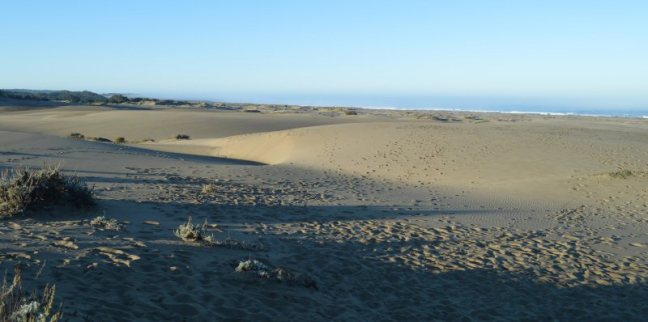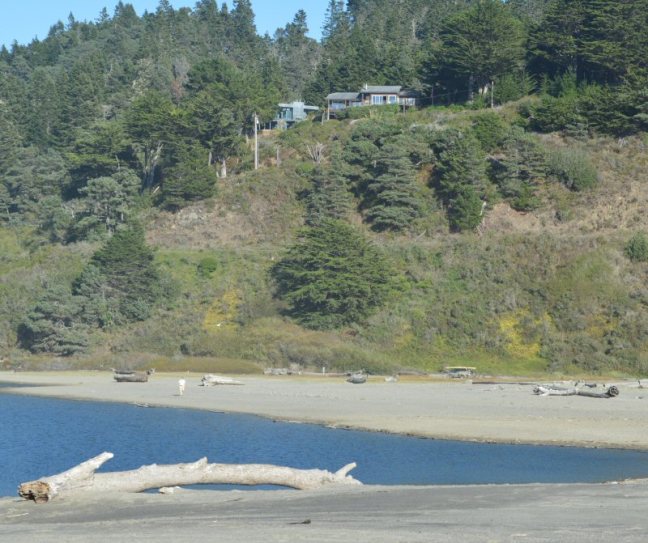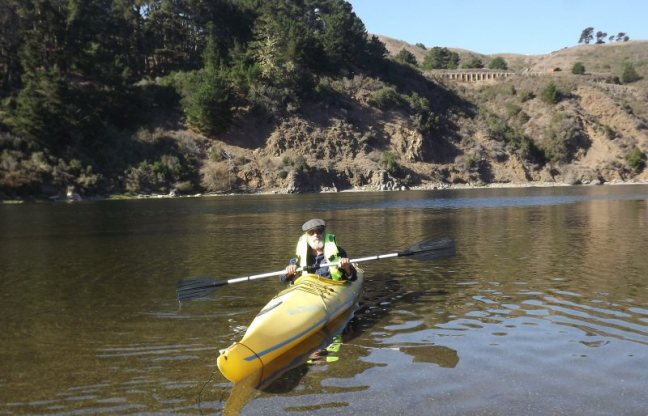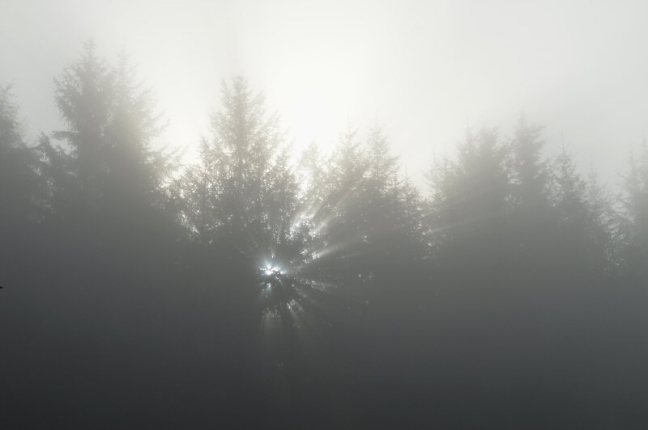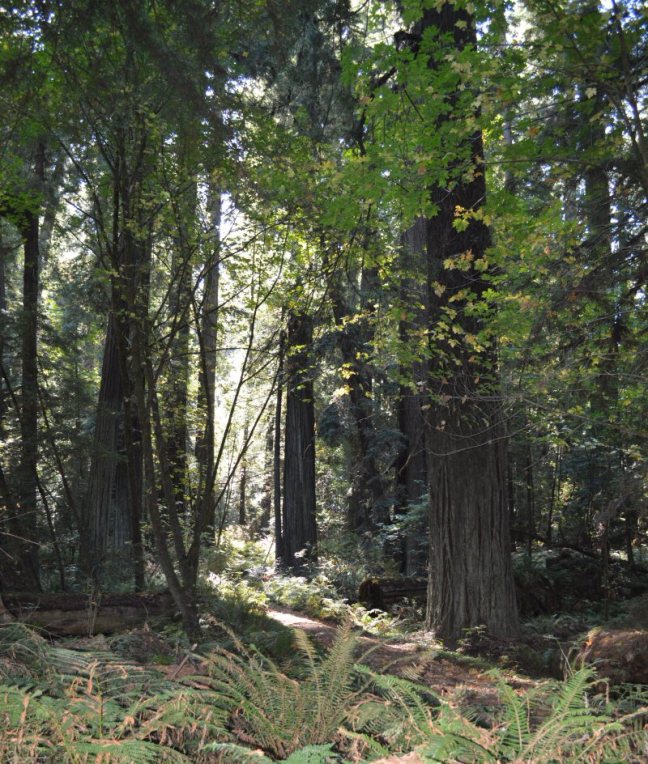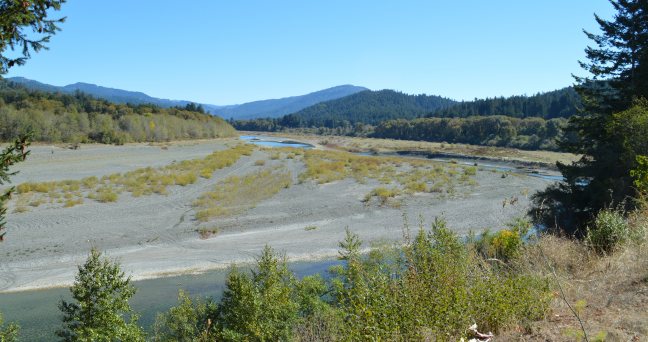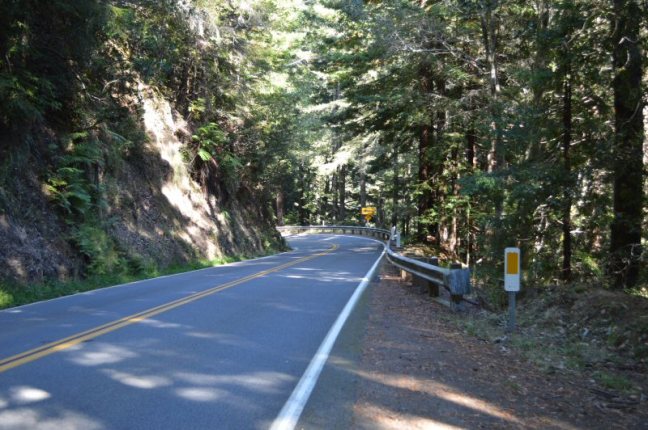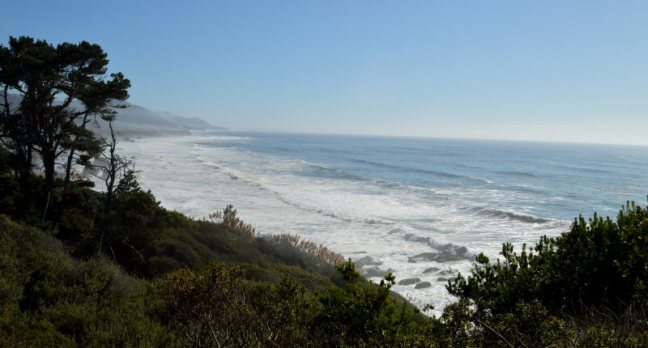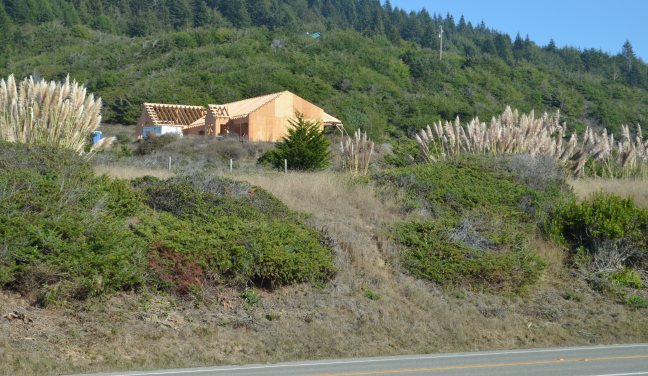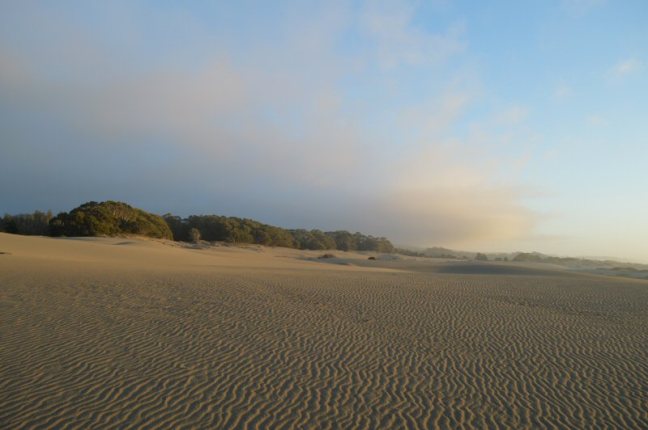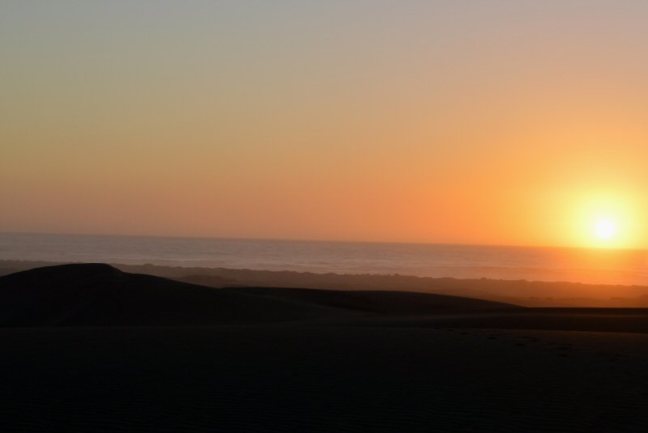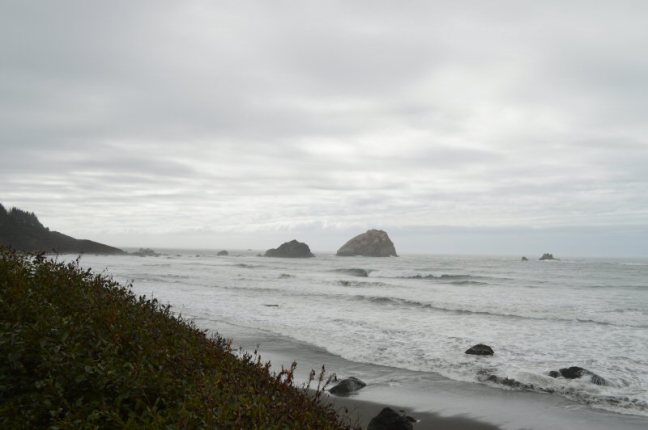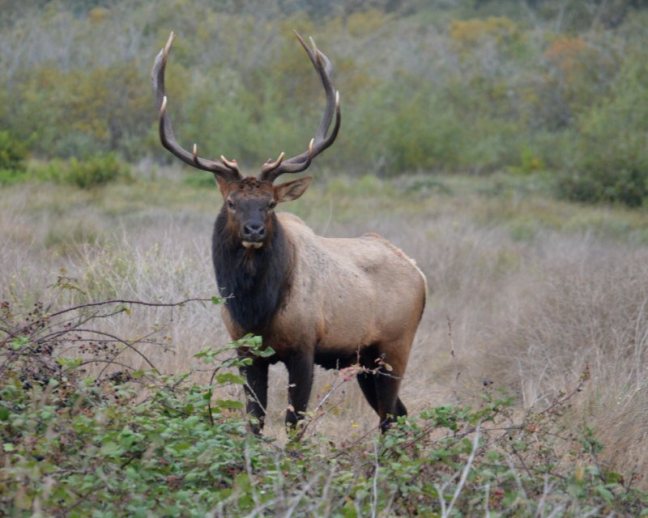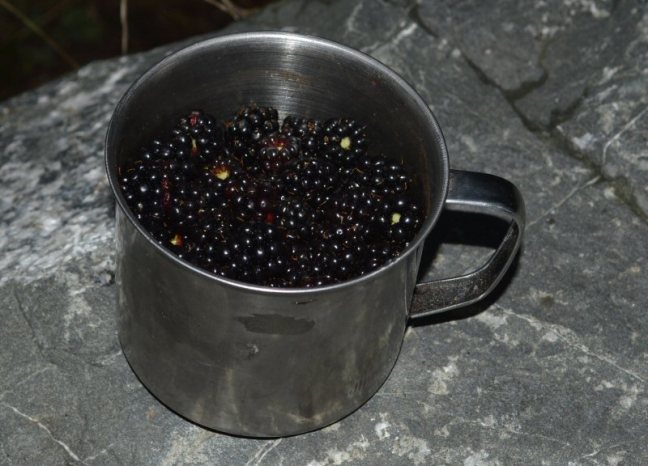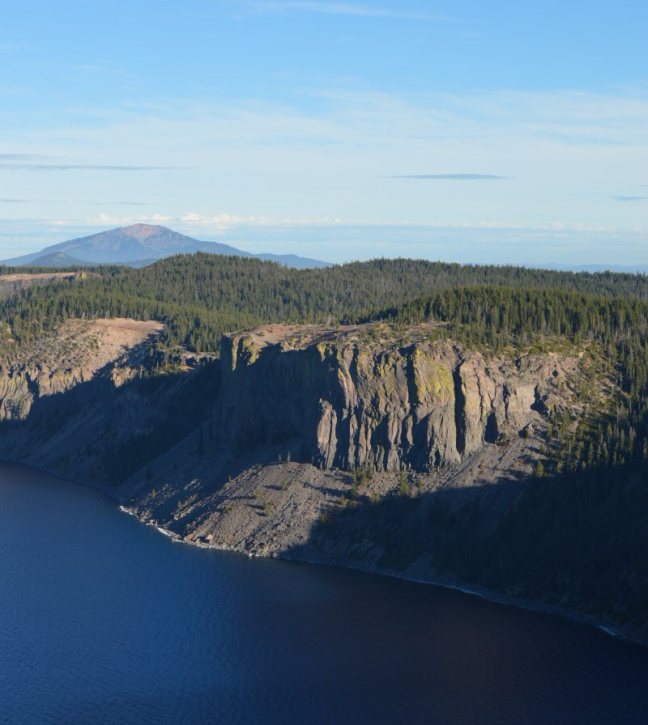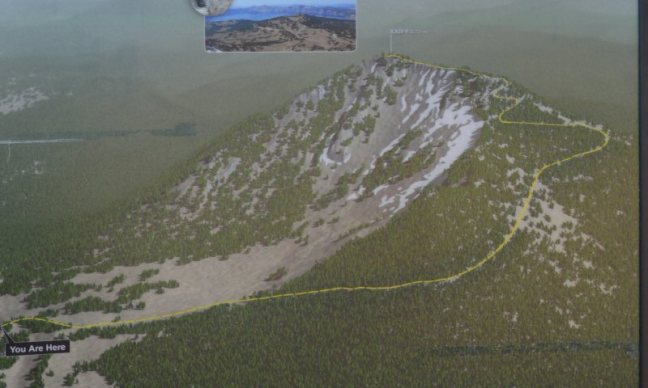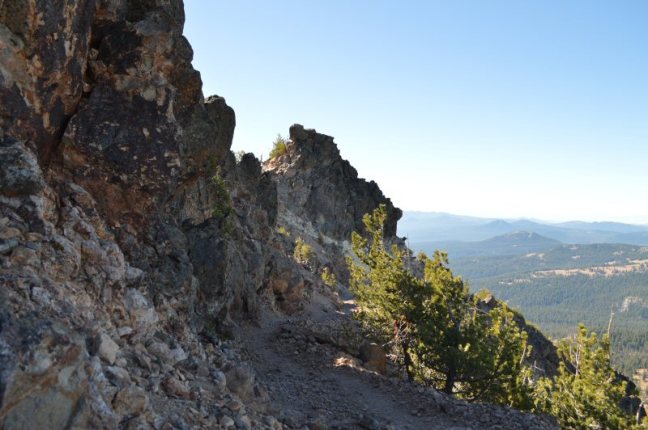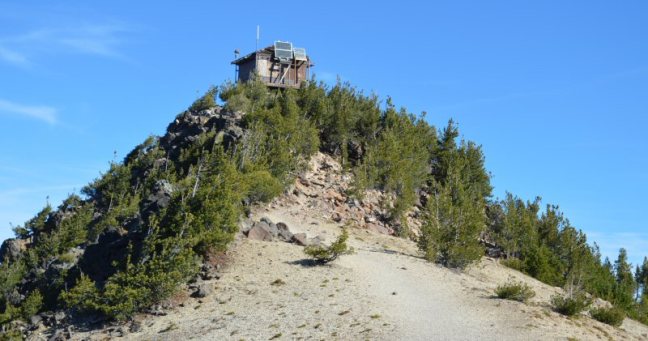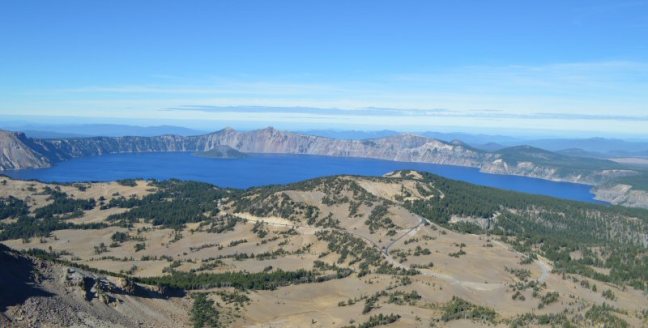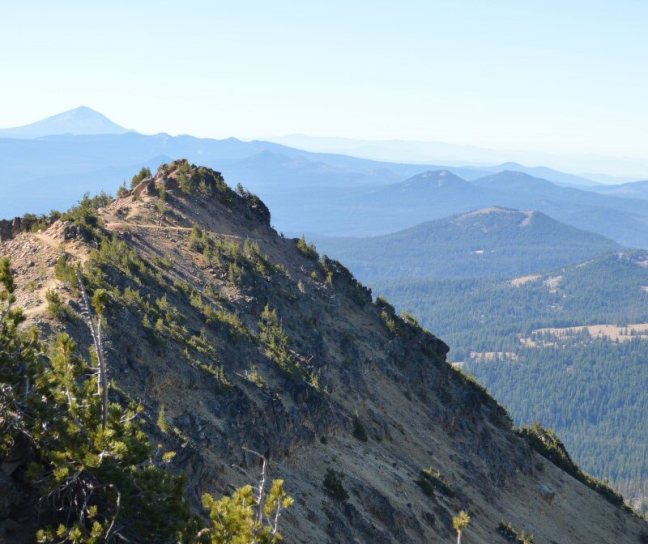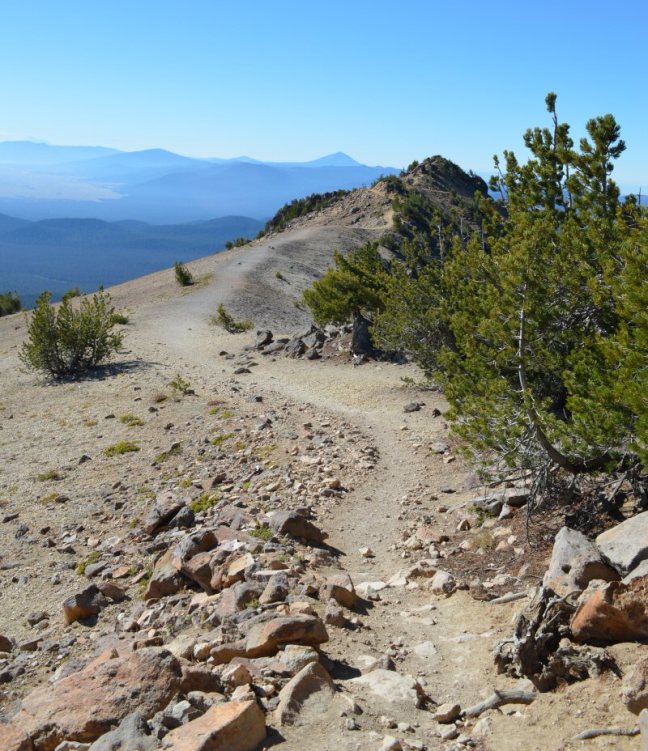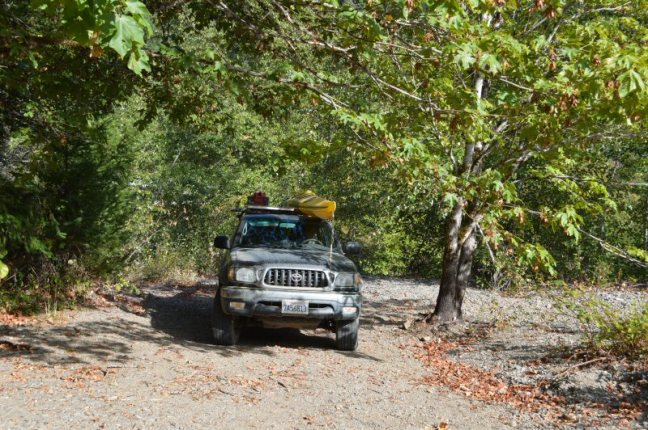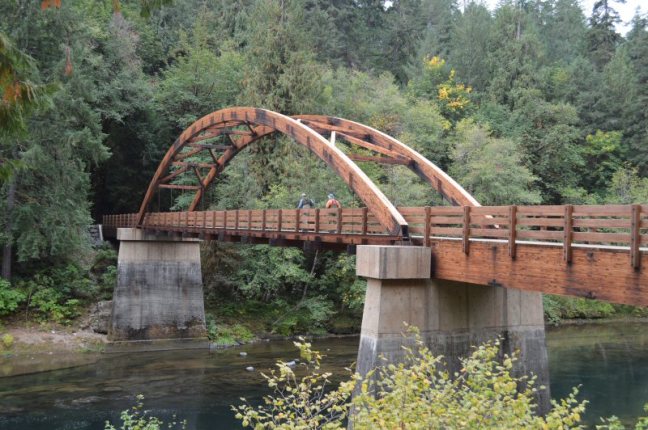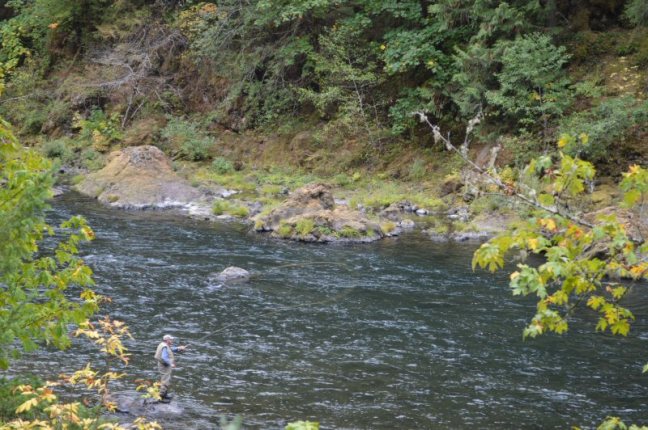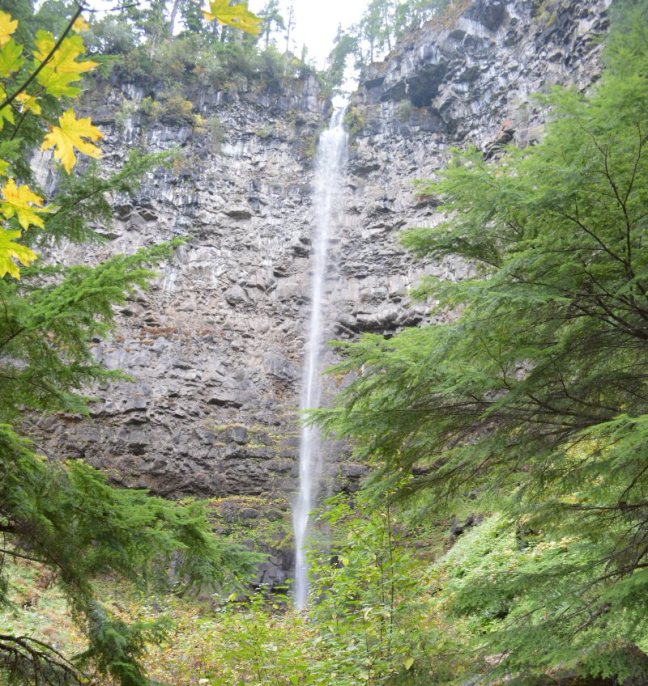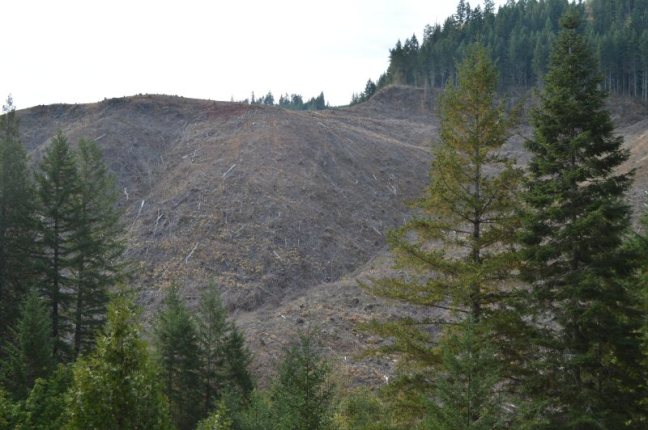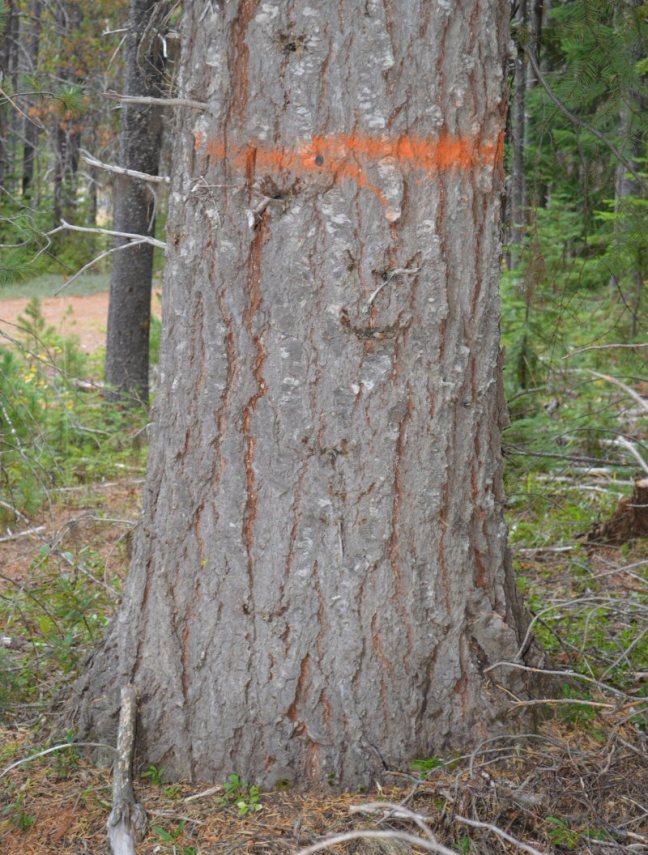I was up early for coffee and breakfast and subsequently listened to the radio as I edited the first two posts for this blog. The local stations were still dominated by news of the recent shootings at nearby Roseburg. Between 6:05 and 6:15 four cop cars went by, all with their lights flashing and two with sirens going.
I entered Crater Lake National Park at 8:15 AM and paid $15 to the “iron ranger.” There had been a major fire in the area recently and there was still smoke and the smell of burnt wood. Even though the fire was contained, there still a few areas where things continued to smolder.
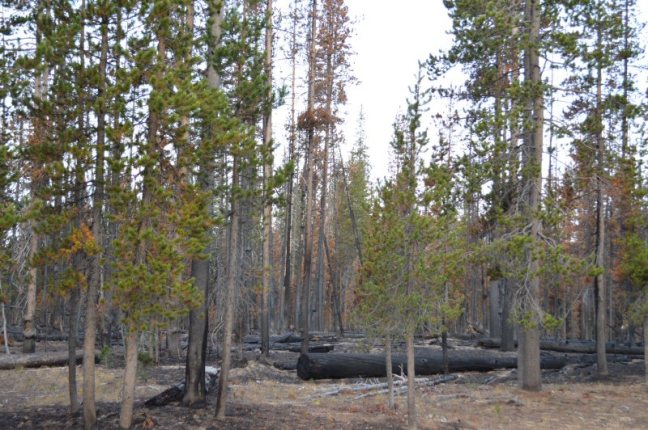
At the Pumice Desert area, distinct smoke could be seen in the distance.
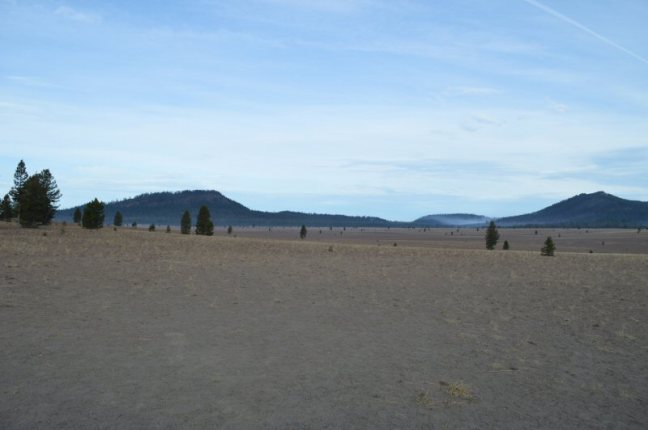
At about 9AM I took a hike along the Pacific Crest Trail. I did about two and a half hours on the trail, and I didn’t see anyone until I was within a hundred feet of returning to the truck.
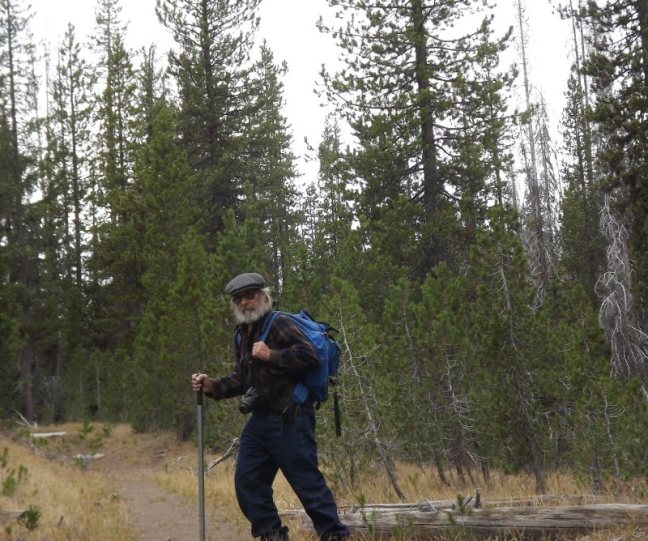
Two guys and their dog were hiking north, but they didn’t have huge Cheryl Strayed-type packs. We only spoke briefly. Mostly they wanted to assure me that their dog was friendly. The trail itself was wide, with gentle up and down slopes, and free of obstacles. Although environmentalists would be aghast, I could have driven the truck everywhere I hiked, but, of course, getting away from such things was the reason why we go on hiking trails. Once away from the road, everything was very quiet. I saw only a few small birds and a chipmunk-type critter. Although there were deer tracks crossing the trail and one old pile of bear droppings, I saw no large animals.
The way that the rock ledges drop almost vertically to the water is impressive. It certainly could tempt rock climbers, but is is nor clear how friable they might be.
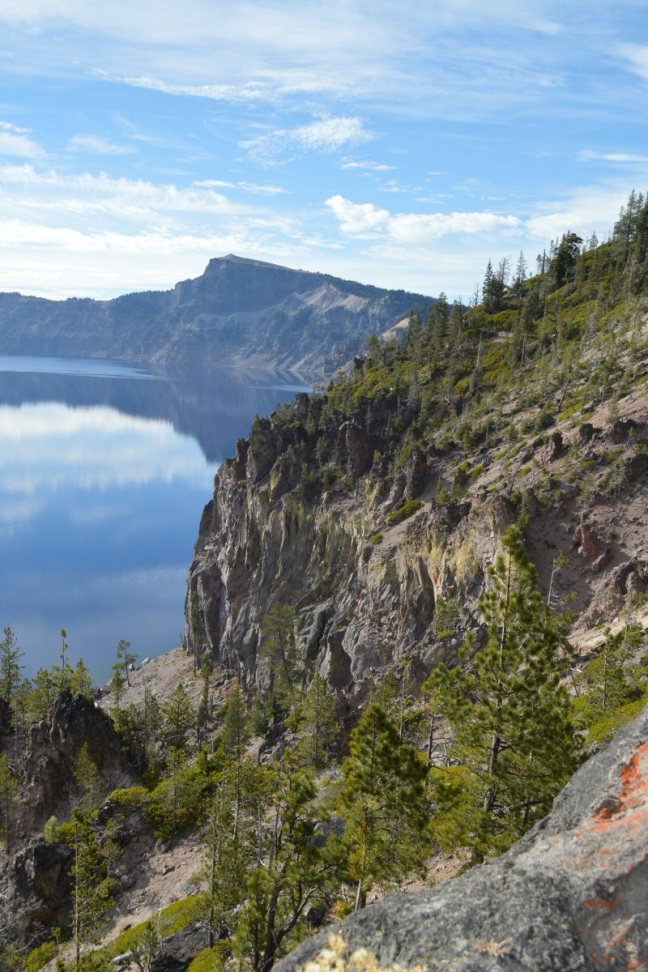
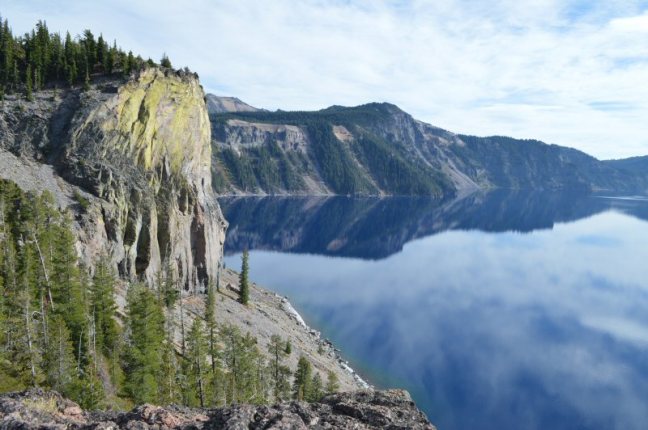
In the afternoon, I did some more hiking, this time descending down some 700 feet in elevation to the lake itself. The trail was so wide and graded that the Forestry service was able to use a Kubota tractor to bring down masonry supplies for trail repair.
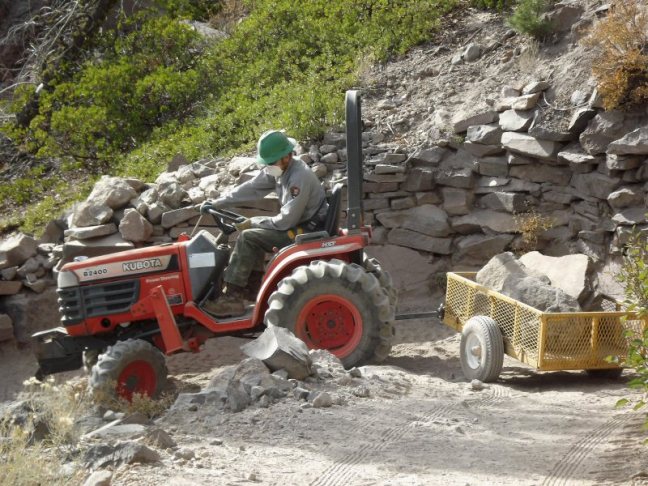
In the photo below, the Kubota was at the turn on the far left of the illustration; they were working at the next downhill turn.
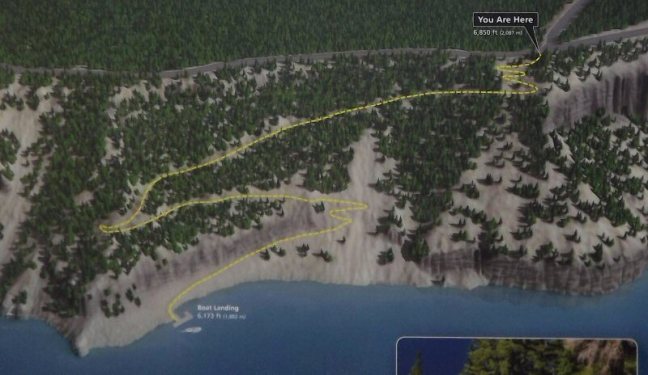
It is reported that the lake now contains rainbow trout and kokanee salmon. I used my 12 foot flyrod and tried a variety of patterns, all to no avail. The shoreline where I fished had a jumble of rocks fallen from the ledges above, similar to many places in Big Sur, however, nothing here was covered with slippery, slimy seaweed. I did see more than a dozen rises, but they all appeared to be very small fish. The water was very clear, but I could not see much evidence of life. There were no schools of minnow-like bait fish cruising the shallows, and there was no vegetation. What those rising fish were feeding on was not obvious. On the way up, I asked the mason doing rock work along the trail about the fish, but he didn’t know about them.
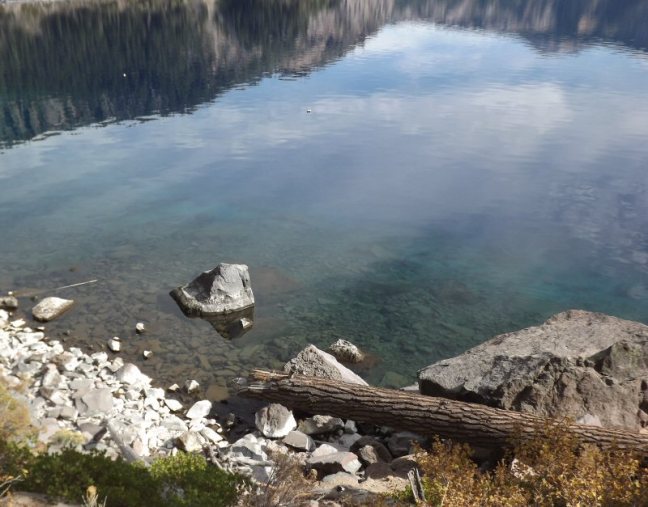
Although the light conditions were not entirely favorable, I did take several 6X12 film shots of the lake. Maybe I can “photoshop” them into acceptable images. I left the park at 4:45 PM and stopped for the evening about five miles down the road. With four to five hours of hiking for the day–this after not having much hiking lately–I expected to have a good night’s sleep.
